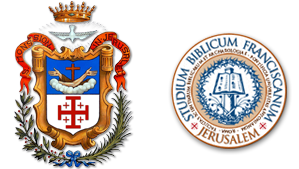...................................
[read in Italian] ![]()
The second edition of the Trattato was published in 1620 by Pietro Cecconcelli in Florence and it was extensively revised. This is immediately evident: even though this edition is also an in-folio, it is smaller in size, thus making the volume easier to handle. The organisation of its contents was also substantially modified: while previously text and illustrations had been separated, in 1620 this separation was dismissed, so that plates and text proceed in parallel. Furthermore, while in the first edition the reference number of each plate (printed at the end of the volume) was next to the capital letter of every text chapter, in the second edition the chapter number is the same number of the related plate which immediately follows the text. The page layout passed from two columns to one and the exhortation to go on pilgrimage was moved to the end of the volume.
| [click sulle immagini per ingrandirle / click on images to enlarge] |
But there are more changes: Bernardino Amico added more chapters and drawings, such as the section about the Via Dolorosa and its illustrations. These changes are so relevant that they are pointed out in the title page, which states that the plates were «reprinted by the same author in a smaller form with the addiction of the Via Dolorosa and other sketches» (Plans, p. 36).
In this edition the dedicatee is Cosimo II de’ Medici, who may have supported the publishing. However, in the dedication the friar also mentions the difficulties met by pilgrims in the Holy Land, such as the increase of taxes and the strict impositions by the Turks. Perhaps through this homage to the Grand Duke, he hoped to call on Catholic princes to repurchase the holy places no longer under the Christians’ control (like the Cenacle and the Mount of Olives).
Drawings, here engraved by Jacques Callot, remain extremely detailed and effective in the Florentine edition, even though they lose a bit of clarity due to their smaller size. Speaking of the language of the text, the printer shows some perplexity for its distance from the Tuscan model (fol. ¶4v and Plans, pp. 7-8).
Please note the presence of some digitised copies available online: two from the Corsiniana Library in Rome (1, 2), one from the National Library in Naples, one from Heidelberg and one from Munich.
